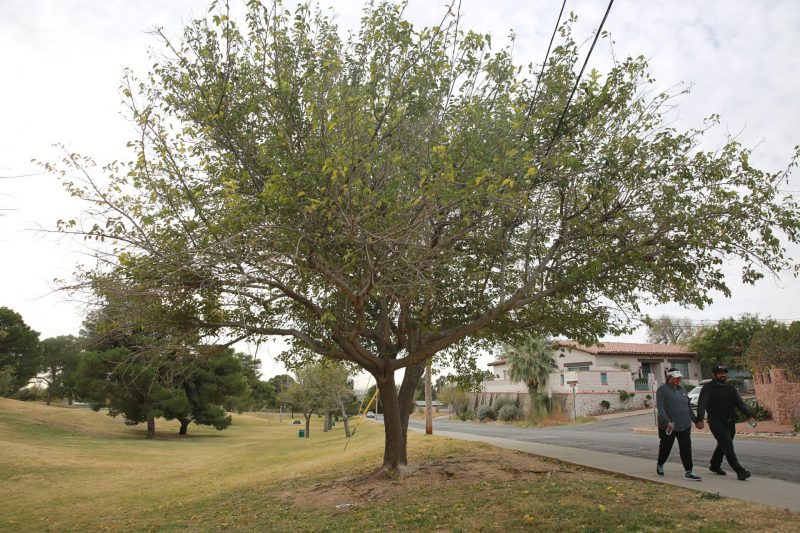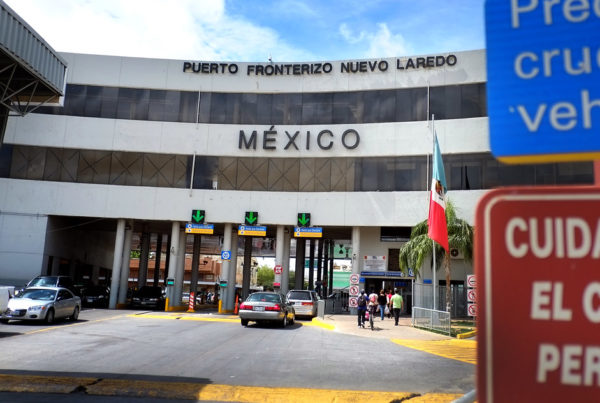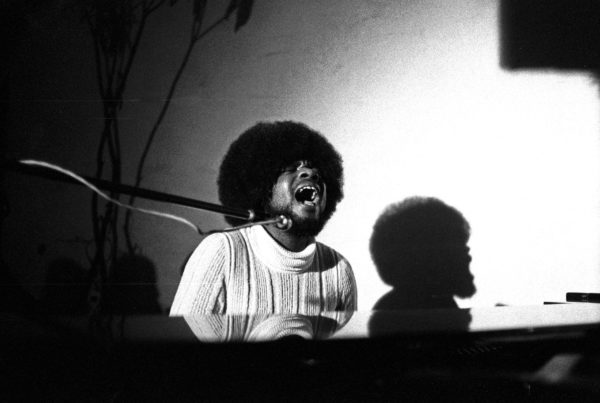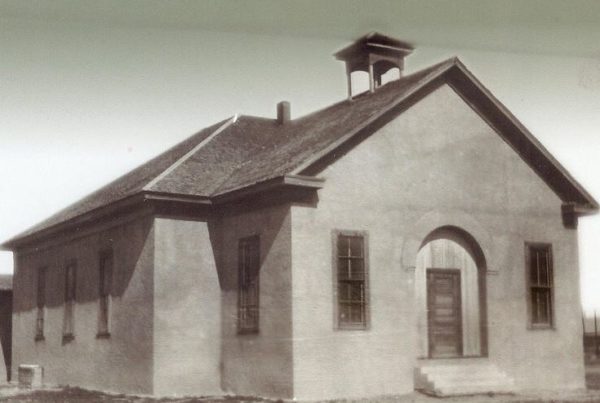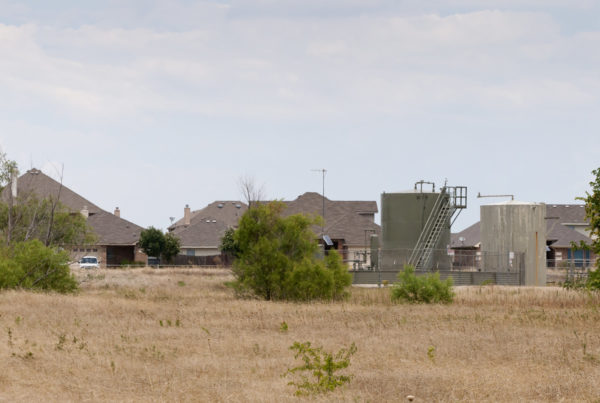The mulberry is a storied tree in El Paso. El Pasoans have tales of either sitting under their shady boughs or being frustrated with the allergies the trees cause in the spring. And there are also memories of chowing down on the maroon or black fruits the tree produces.
They populate public spaces from Memorial Park to Album Park and grow from the Westside to the far Southeast. The versatile trees — also called moras — are indigenous to temperate Asia, but were adaptable to the Southwest desert life.
Although a previously popular landscaping staple, the tree wasn’t universally loved.
El Paso banned the planting and sale of the trees in 1992, following other Southwestern cities such as Las Vegas, Tucson and Albuquerque, which all cracked down in the late 1980s and early 1990s on the allergy-causing amounts of pollen released by male trees.
Brent Pearson, an arborist with the city of El Paso, said there was a period of overplanting the male cultivar in public spaces and at private homes. He said wetter conditions in the 1990s meant the trees flourished.
“They became too popular for their own good — that’s all that was planted,” Pearson said. “Mulberries put out a tremendous amount of pollen compared to other trees.”
Some major cities in the United States have a problem with pollen levels because local governments opt to plant “non-messy” trees that don’t bear fruit or seed pods to keep sidewalks clear and lower maintenance costs, often meaning that they plant pollinators instead.
In 2007, El Paso considered removing the ban. Dr. John York, an allergy specialist in El Paso, gave his professional opinion that the trees caused severe allergic reactions, which he said he didn’t observe with other trees.
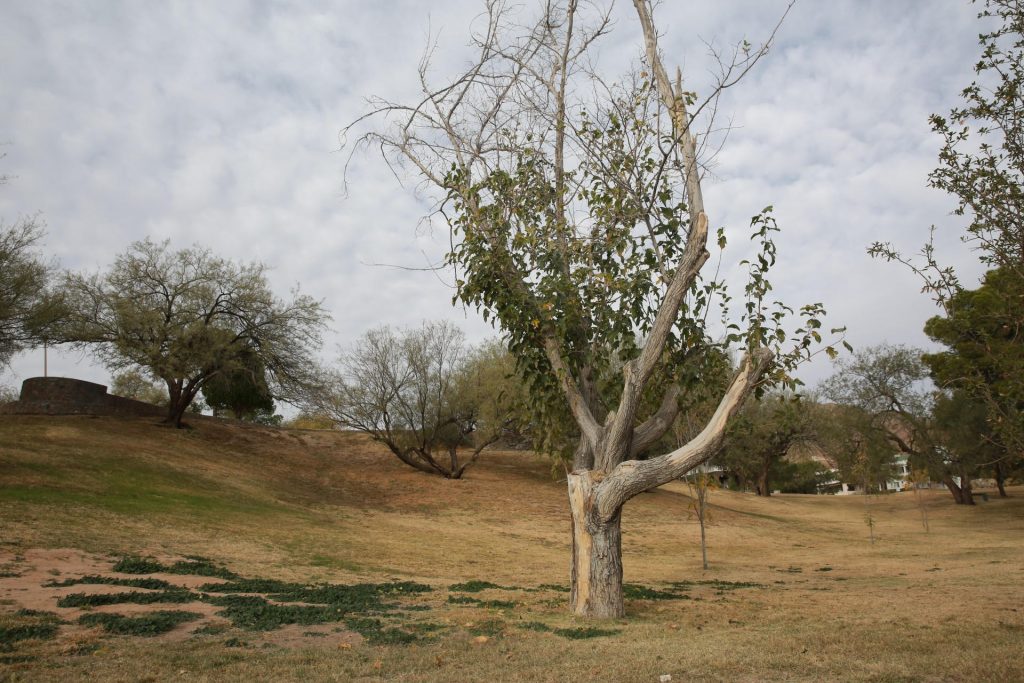
“While many people are mildly to moderately allergic to mulberry pollen, just as they are to other pollen, mulberry pollen to some is a dramatic allergen, setting off severe asthmatic reactions,” he said. The reactions could be triggered from something as minor as walking under a pollinating tree, he noted.
York said at the time the city should consider adding juniper plants, used in streetside groundcover, to the ban.
There’s no specific distinction between male and female trees in El Paso’s ordinance. It simply states that it is unlawful to sell or “plant any mulberry tree within the city,” after Sept. 1, 1992.
Nearly 30 years into the ban, many of the trees are dying as their life expectancy is only between 30 to 50 years. Tree experts said it’s a chance to be thoughtful about their replacements.
According to a 2014 study of El Paso’s urban forest, there’s an estimated 75,000 white mulberry trees in the city, and Pearson said most of them are in decline.
“It’s hard to find a vigorous mulberry, because they are at the end of their lifespans,” he said.
The dead trees will have to be removed in coming years, but he said the city is in a better position than before the ban to plant other trees.
Pearson opposed the ban when it was first proposed because he ran a nursery that sold mulberries. But he conceded later the ban spurred changes to the city’s urban forest.
“I was against it at first, but the consequences that created were good,” Pearson said. “It turned out to be beneficial as far as people planting other trees. Change is hard, but change is good.”

Denise Rodriguez, with the Texas A&M AgriLife Center in El Paso, said the extension opposed the ban, asking instead for education, and marking trees as high pollinators.
In the mulberries’ waning, El Pasoans have a chance to promote indigenous plants, such as the Mexican redbud, honey mesquite or the desert willow, Rodriguez said.
“When people select plant materials that are native to our Chihuahuan desert region, they are going to withstand the harsh climate, and last for years,” Rodriguez said. “We don’t get a lot of rain, but there is also a lot of resistance to pests or diseases if we choose native trees.”
Rodriguez said trees’ value extends far beyond the aesthetic. Shade reduces reflective heat and lowers temperatures of neighborhoods. Root systems anchor soil and prevent blowing dust and flooding. Trees clean the air. The Texas Commission on Environmental Quality estimated the 1.2 million trees in El Paso remove 318 million tons of pollution annually.
Of course, in El Paso, trees find it hard to survive without help. Trees require access to irrigation to survive the heat and dry temperatures. The challenges for growing healthy trees are compounded by hotter temperatures and a shrinking Rio Grande in the recent decade.
Jeff Anderson, the extension agent at Doña Ana County, said trees are worth the water.
“The answer is not to plant anything and pave everything over,” Anderson said. “Plant drought-tolerant trees, give them that little bit of water that they need to have to survive here. Because we’re way too dry to not give them any water, even for native plants.”
Cover photo: Walkers stroll near a mulberry tree in Memorial Park. (Danielle Prokop/El Paso Matters)
This article first appeared on El Paso Matters and is republished here under a Creative Commons license.![]()


